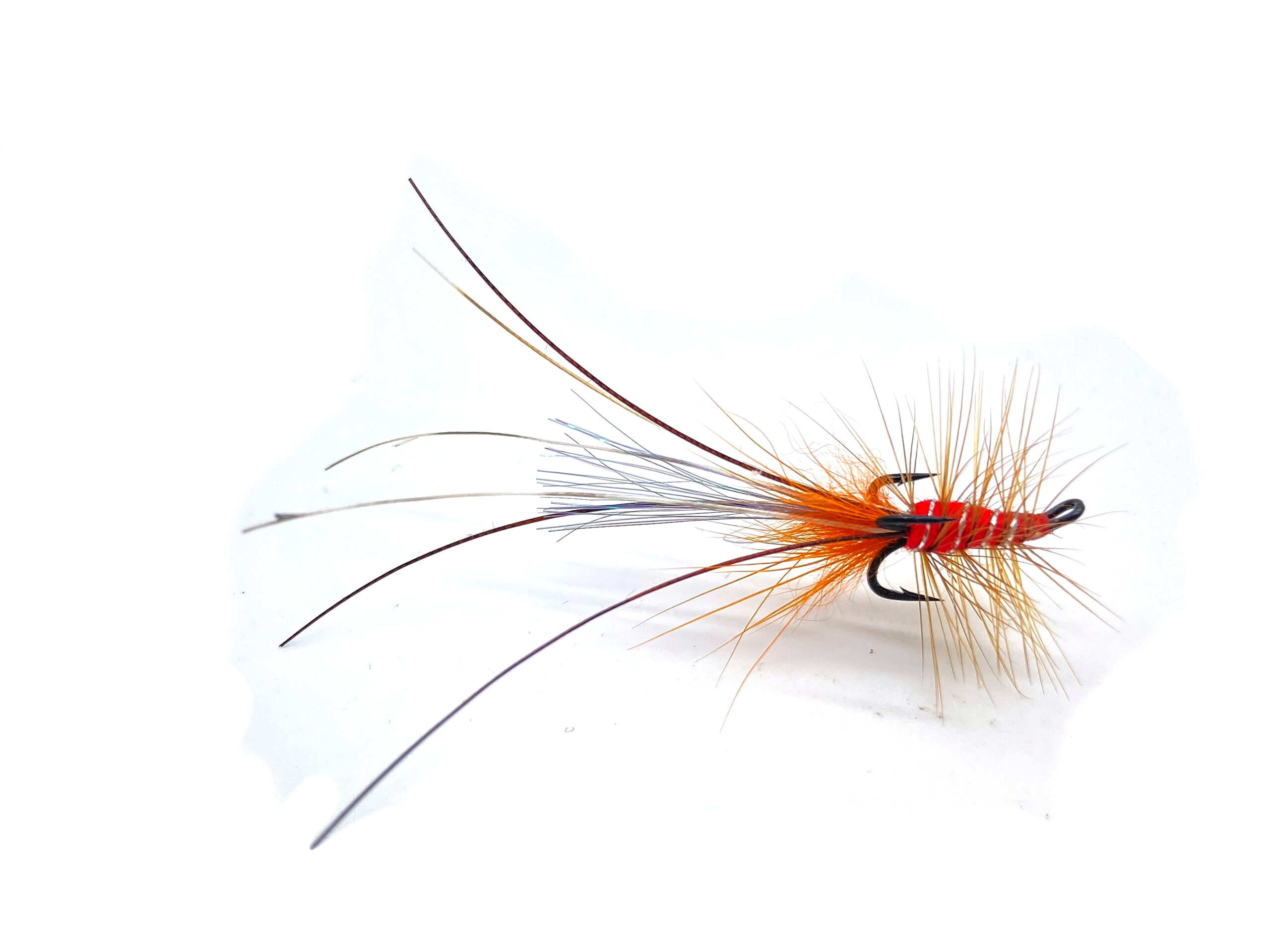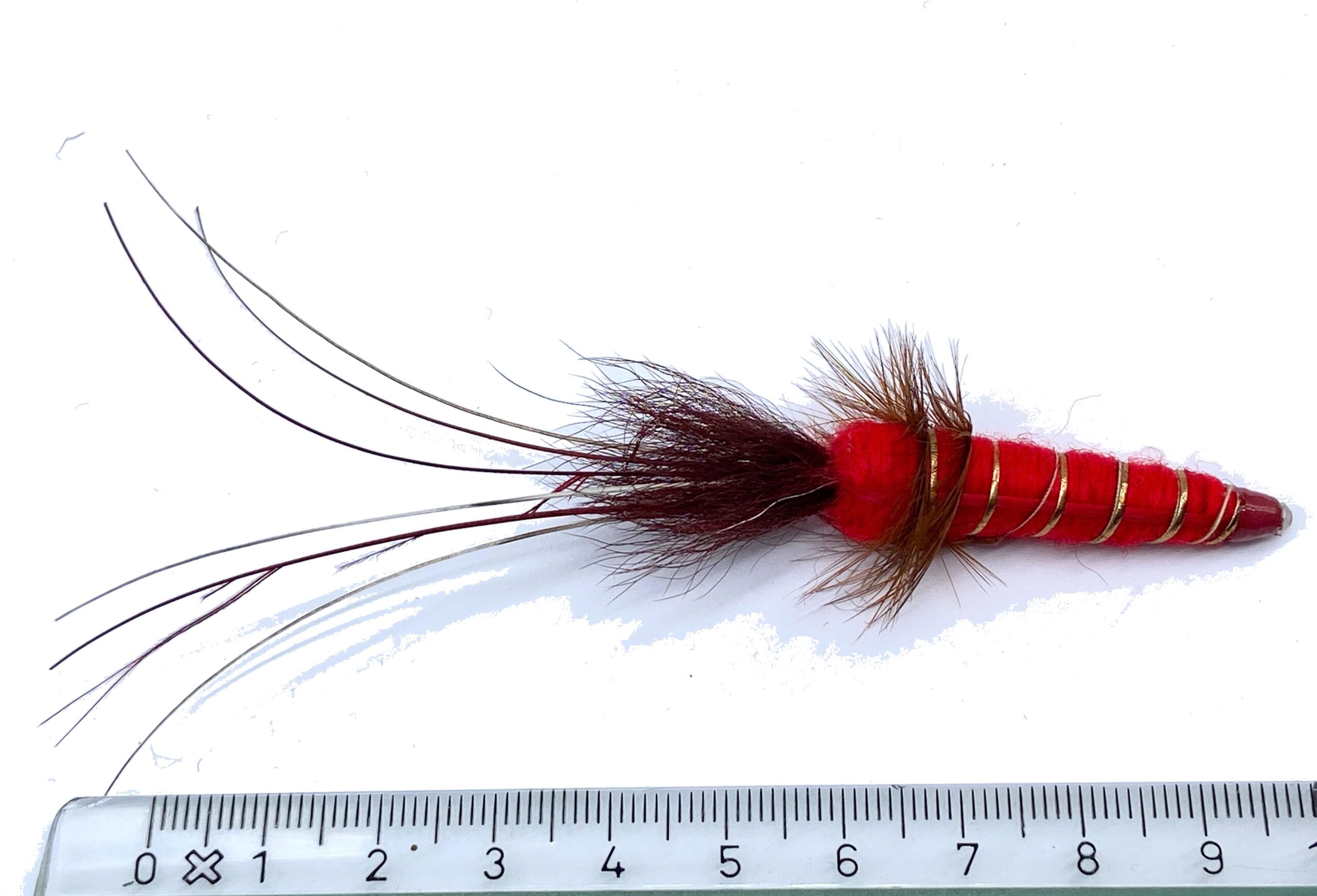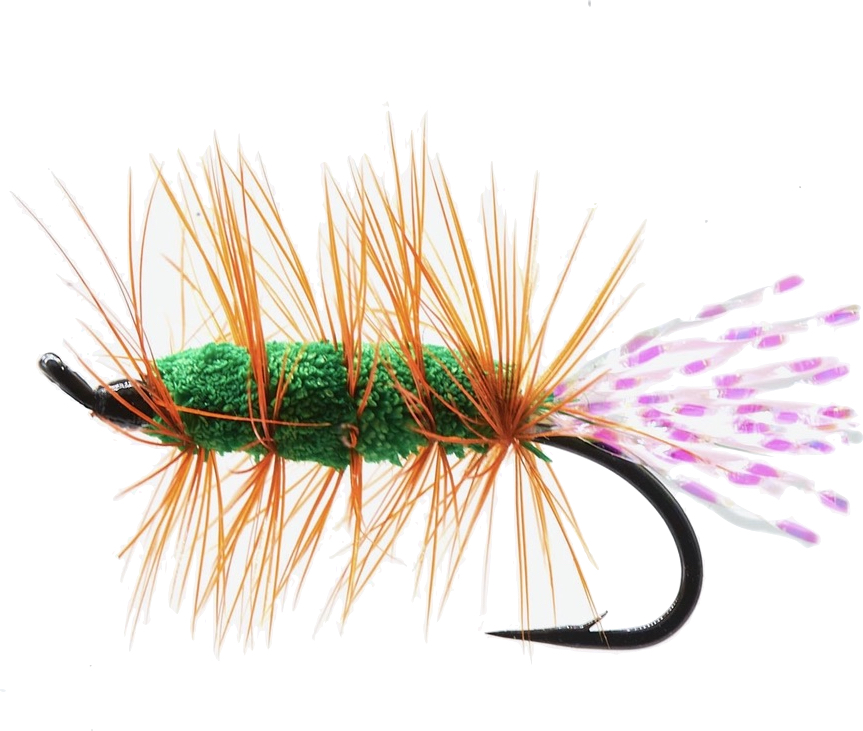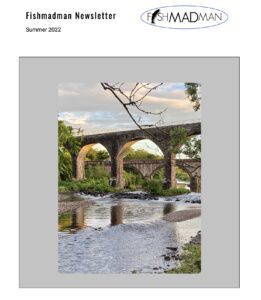Read the letter in Scandinavian (This time Danish)


Dear topwater anglers…Salmon & trout season is ending, and yet again, the cycle of life will begin in the rivers we love to fish.
I always get that lump in my throat on that very last day when I have to travel home, so I tend to remind myself of the words of Pippi Longstocking:
You have to leave to be able to return
With those famous words, we welcome you to a short newsletter on what to look forward to in 2023
Tight lines from us at Fishmadman Las, Per & jesper
Newsletter this time
-
- A micro fly behind the hitch fly
- Fluorocarbon versus nylon
- Some great capes worth mentioning – and an early Christmas discount
- A few images from this year
Micro stinger and hitch
In Scotland
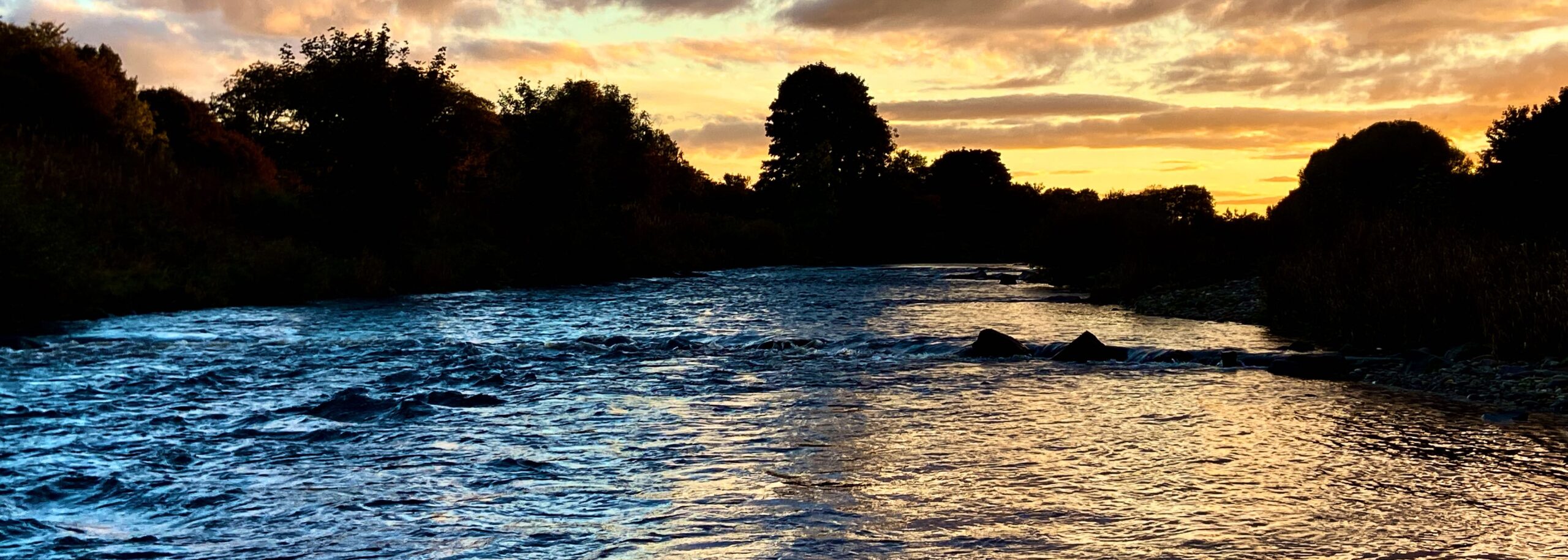
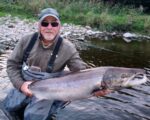
Scottish know-how
When I go to Scotland and fish the Kinnaber beat on the river North Esk in Aberdeenshire I am fortunate to spend time with my fishing friend Ron Gray who is the head ghillie on the Kinnaber beat. Ron is a riffling hitch specialist, and as a ghillie, he is lucky to be at the river every day during the season.
Ron with a big local critter caught on a micro # 16
Local insight
When being at a river every day during the season, you learn the different moods and small changes of Atlantic salmon and trout better than most anglers ever will do. Advice from the local angler or ghillie may be invaluable information to the visiting day ticket angler.
Micro flies … the essential requirement
If the river is low and warm or the fish you have come to fish have gone stale, you will ever so often find that the flies needed to trick such fish into bitting will be some of the smallest flies you may find in your box. Slow water could dictate a sparsely dressed fly to enable you to make the right presentation at the back part of a pool, or the daily rise of local insects such as stoneflies, caddisflies or mayflies may have brainwashed the stale inhabitants only to react to fly patterns that mimic something they see from day to day.
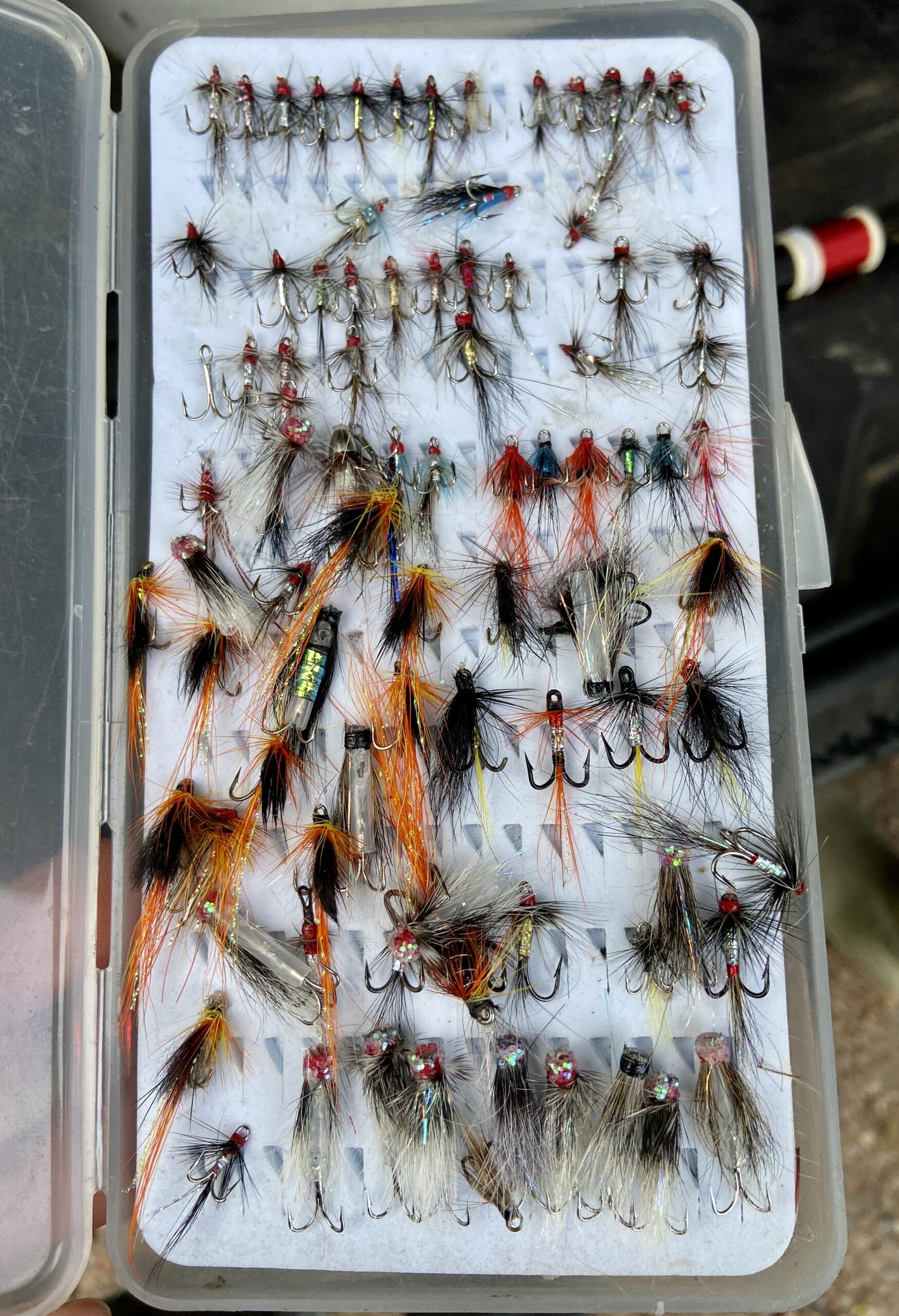
A sneak peek into Ron´s box of micro flies – The tiny Micro treble hook flies # 16 – 20 are seen in the top part of the box.
See small outpoint silver trebles # 16 for your micro fly tying here
The Hitch flies as a vessel
Fishing riffling hitch flies can be a great choice when fishing the Kinnaber beat on the North Esk where pockets and runs in several pools work in favour of a fly presented on or in the surface, but a riffling hitch fly can also be a vessel for other flies such as micro flies in # 16 – 20 and this is a technique Ron Gray advise anglers to use when they visit the Kinnaber beat during summer months where salmon can be very very picky.
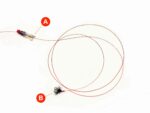
How To
When you tie on the tube-hitch fly hook, leave the amount of tippet from the knot that you want for the trailing fly
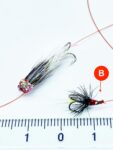
Micro outpoint treble hook flies
Ron´s hitch tube fly and on a small fly tied on a outpoint treble – Ron also use micro flies tied on single hooks.
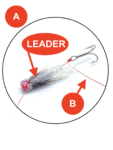
The set-up
Keep it simple
Using a trailing fly can be a great technique, but it is also a form of fly fishing that could end up in a lot of line tangle.
Ron uses a small tube hitch fly as the main fly and carrier for the micro fly (# 16 – 20), trailing some 70 – 100 cm behind the front-end fly.
To keep the trailing fly below the surface, Ron prefers to use 8 Lb. fluorocarbon as a tippet material. * Fluorocarbon sinks a bit better than nylon, and it is also a bit stiffer than standard nylon tippet material, something that may prevent some of the tangles (for illustration, we have used a piece of regular Maxima Chameleon nylon in the photo above )
Trailing flies – what is it all about?
We don’t know what it exactly is with the trailing fly that makes it so unique, yet again it is one of those things in fly fishing for trout and salmon that isn’t well described in the grand manual of salmon fishing (:
The cocktail: of hitch fly + trailing micro fly is another valuable tool in the fly box for the angler seeking to catch those elusive Atlantic salmon and trouts hiding out in river pools during summertime.
I think that the salmon or trout sees the setup as a line of hitching insects… and it is then animated to seise the last one ..the one that hasn’t hatched yet…just a guess.

Stale salmon - learn more
Curious to learn more about the cycles of Atlantic salmon …see our Fishmadman page on this subject here
Fluorocarbon versus nylon
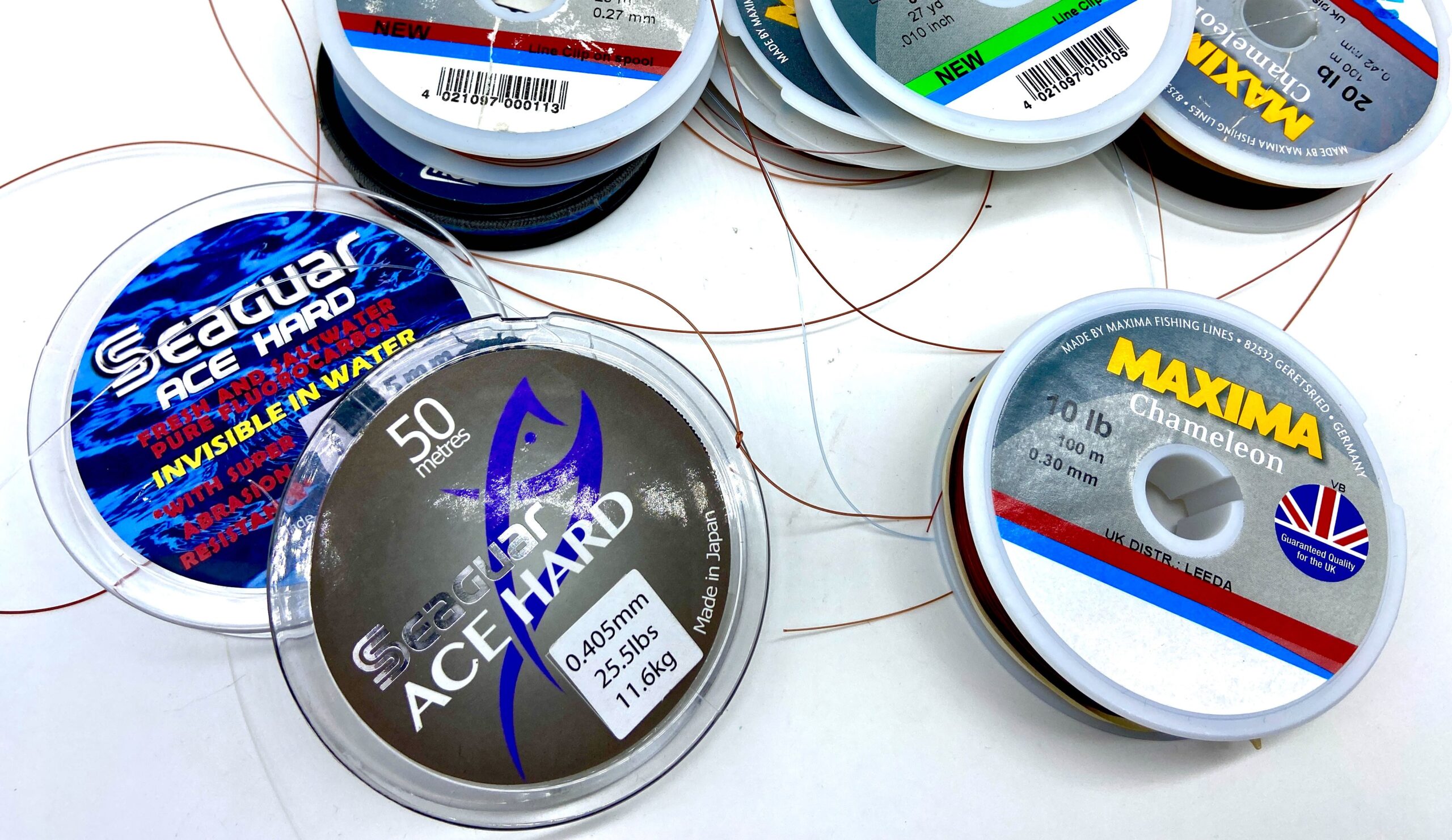
Fluorocarbon versus nylon
What is Fluorocarbon? Fluorocarbons are chemical compounds with carbon-fluorine bonds Fluorocarbons, and their derivatives are commercial polymers, refrigerants, drugs, and anaesthetics. (source Wikipedia)

The first fluorocarbon line was produced in 1972
It is the Japanese manufacturing company Kureha in Iwaki city that developed and launched Seaguar, the world’s first fishing line made from fluorocarbon (PVDF), in 1971.
The material quickly became immensely popular among big-game and commercial fishermen largely because of the light refractive index of fluorocarbon line so close to that of water, making it less visible underwater, something quite significant, e.g. fishing for giant bluefin tuna with 200 lb mono – Fluorocarbon line also has other noteworthy features a.o lack of water absorbency, abrasion resistance and knot strength last but not least the speed fluorocarbon sinks through the water (it sinks faster than nylon) * something Ron Gray benefits from in his fishing with trailing micro flies.
Fluorocarbon is becoming more and more popular among fly fishermen.
Fluorocarbon has become distinctly popular over the last couple of decades, and many anglers I know do not think twice when buying a spool of fluorocarbon tippet material 6 – 7 times more expensive than a spool of quality nylon tippet material.

Is fluorocarbon line material necessary?
If you ask me as a sea angler fishing for tuna, mackerel and grey mullet I would say yes! … fluorocarbon will get you more fish on the bank.
The tuna species and mullets are fish that see and avoid things like nylon, and in this way, they may also deter from taking your bait when you use nylon.
Fluorocarbon for trout and Atlantic salmon
As an avid trout and salmon angler, I would say no… save your money and buy nylon for your fly attachment – doing so, I will probably have fellow anglers raising their eyebrows – but my experience with fluorocarbon has shown me that the material has few properties that would help me get more bites, saying so I acknowledge that fluorocarbon has so many abilities that could aid anglers in specific and unique ways not known to me, making my advise a bit bias.
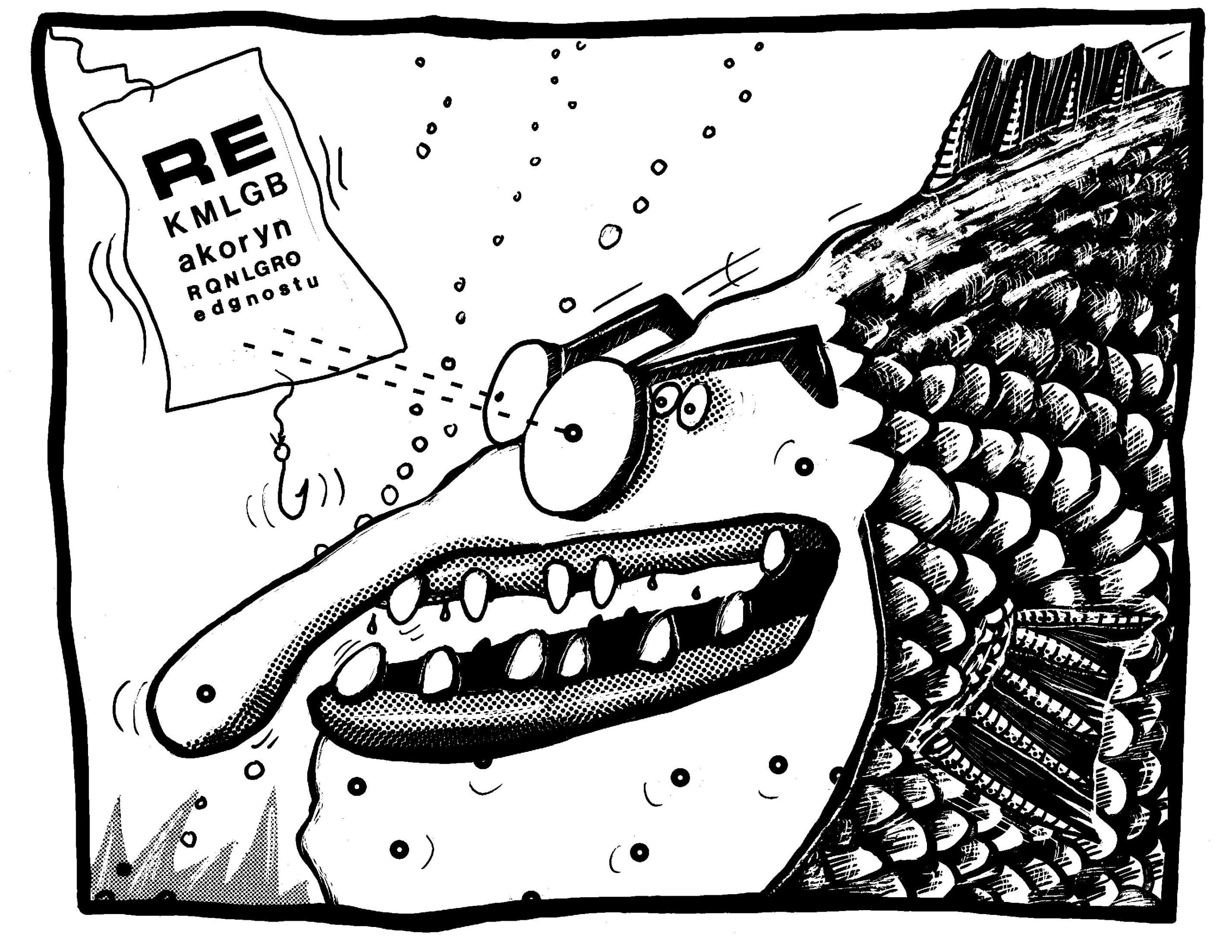
Salmon and trout don't seem to care about the light refractive index!
Since the 1980´s I have regularly used fluorocarbon in my fishing for sea trout (sea run brown trout) and Atlantic salmon. In the early days, I was sure that the low light reflective index of fluorocarbon would enable me to trick some of the wary trout and salmon I so often would encounter at the coast and in rivers – I gradually learned that these fish was just as uninterested and cautious as they used to be with my flies fished on nylon – and overall I don’t think I have caught any more trout and salmon because of the use of fluorocarbon leaders or tippet material.
Illustration Jesper Fohrmann
Fluorocarbon is stiffer than conventional nylon.
Generally speaking, fluorocarbon is stiffer than conventional tippet material, and it is also a lesser elastic material than nylon, which is not something I would benefit greatly from in my fishing for trout and salmon; on the contrary, I try to avoid stiff tippet material as I find that inflexible leaders take away some of the life that small and medium fly patterns need to perform well.
I do also prefer a cushy and elastic nylon tippet to a stiff and less so flexible tippet material. Since I often fish for bigger fish with small hooks and light tackle in a sport where elastic tippet material comes in handy ….Read more on this hard fighting topic on our blog at Fishmadman (You have to lose salmon and steelhead on small flies)
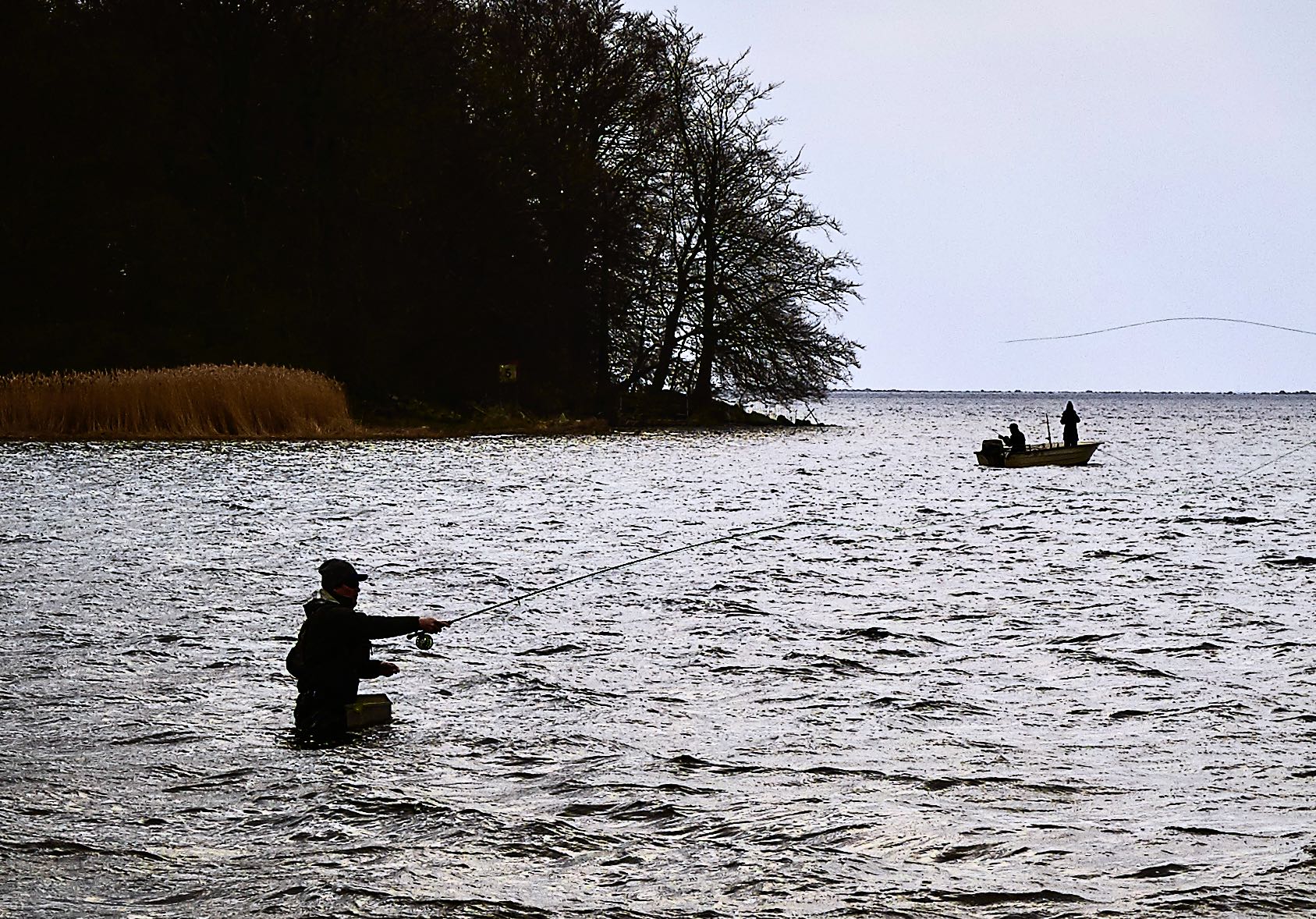
Using Shooting head on the coast? Fluorocarbon might be something for you
Per Fischer uses measures of fluorocarbon (Berkley Trilene 100% Fluorocarbon) to tie up his leaders when fishing with shooting head fly lines for sea trout and pike from the open coast. Per ties, his leader from 0.60-millimetre Fluorocarbon to 0.45, then 0.40 etc. ending in 6 or 8 lb (0.25 millimetre)
When using two flies on the leader Per also uses fluorocarbon material as this tangles less when casting.

Let's debate the subject of fluorocarbon
I believe that some of you may have had great experiences with fluorocarbon and if so I would welcome any relevant input and thoughts on the subject of fluorocarbon for trout and salmon, I will add your text to this page – write me about your thoughts at jesper(the A)fishmadman.com
Some from 2022

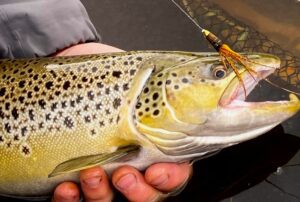
Snaelda Willie Gunn Conehead Copper Tube ¾
Our new Snaelda Willie Gunn Conehead Copper Tube ¾ was on our tippet from beginning to the end of the season – Here fished deep for October sea trout.
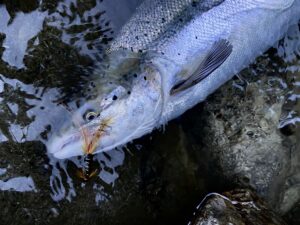
Big Snaelda Willie Gunn Conehead Copper Tube 1 1/4
The big version was great to use in the beginning of the season…right on the top of fast white water – a spectacular way to catch salmon.
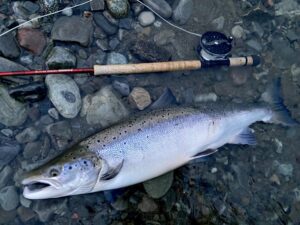
HITCHMAN – Black and Gold # 10 – 14
August brought some spectacular takes to the HITCHMAN – Black and Gold # 10 – 14 I didn’t even see this fish even though it was only a rod length away when it sipped up the fly.
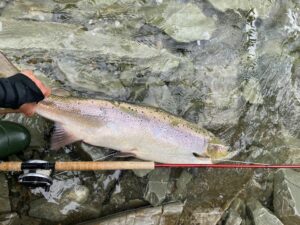
HITCHMAN – Black and Gold # 10 – 14
Another August salmon to the HITCHMAN – Black and Gold – this one fished on a broken hand… A new experience for me and probably not what my doctor would recommend.
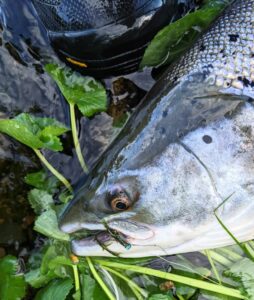
Silver HITCHMAN
Riffling Hitch aficionado Mr Alan Vang caught this beautiful 88 centimeters 35 inch July salmon on a Silver HITCHMAN
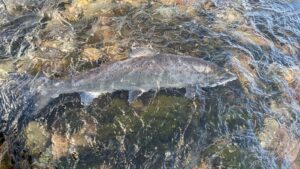
Alans video channel on Youtube
You will find Alans video channel on Youtube here
Fly tying winther
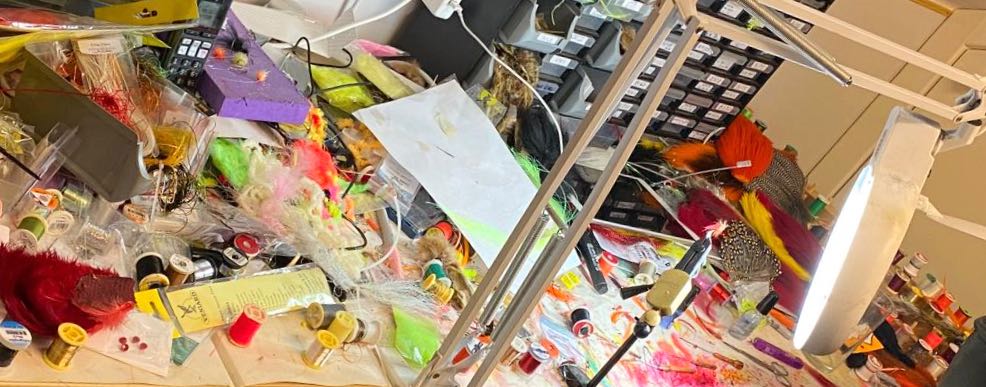

Get in there…
You might look forward to Christmas turkey, friends, and eggnog – I am looking forward to fly-tying … I got a few new ideas and some flies I need to tie up for my coastal fly box. I have bought the hooks, and I also have the perfect cock cape for the job.
A long time coming
One of the most awaited seasonal orders in our shop is our order for Metz cock and saddle capes… They arrived just in time, as our skilled Frances fly tier is about to start the new batch of flies. The capes took their time to turn up here in Denmark… and I know that a few of you reading this now will be securing necks while we have the material in stock… unfortunately, we weren’t granted that many.
Why do you sell # 2 and # 3 capes?
These # 2 and # 3 capes fly right under the radar. They are inexpensive, and they are super quality; last but not least, they have a wider variety of feathers leaning more toward the bigger fly patterns.
Super affordable US quality ★★★★★
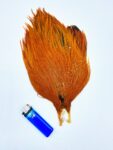
Metz # 2 Brown Neck
Perfect for small and big body hackles on Frances flies – Perfect to make long, vibrant feels from – Great.
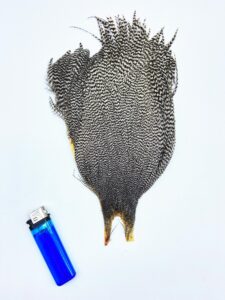
Metz # 3 Grizzly Neck
Superior natural colures – Awesome quality at a great price.
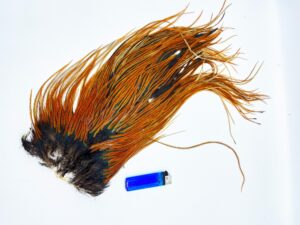
Metz # 2 Natural Brown Saddle
Just the material for big dry flies – Bugs and worms.

Metz # 2 Ginger Saddle
Just the material for big dry flies – Bugs and worms in a beautiful ginger colure.
A bit of inspiration (:
Give someone a new perspective on life - take them fishing

Please...Take someone fishing
To all new and old costumes at Fishmadman… thank you for your support and great letters and phone calls this summer – We try to keep prices on our things as low as possible and hopefully we will be able to maintain our fly-tying business through a troublesome time.
In the hope that someone would please take Mr Putin fishing so that he may gain a positive outlook on the future and idea’s on how he could spend the rest of his life in peace… fishing… somewhere back in Russia.
Tight lines from Per & Jesper

